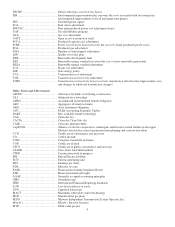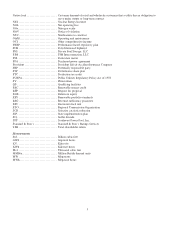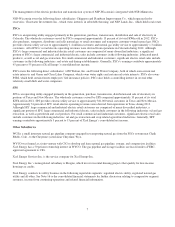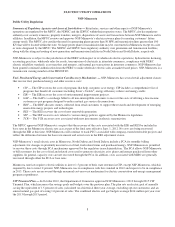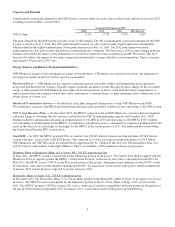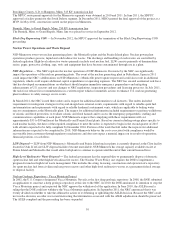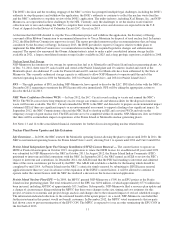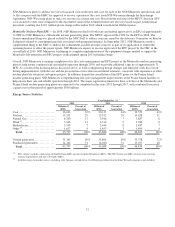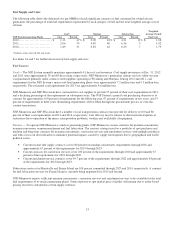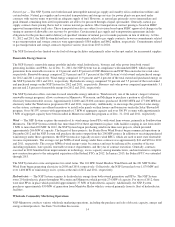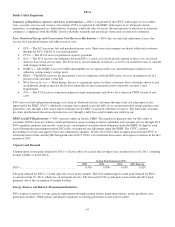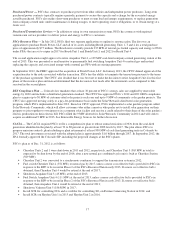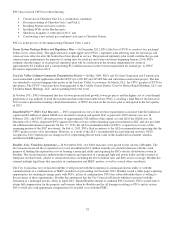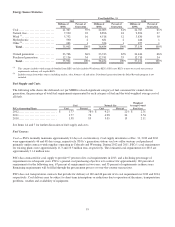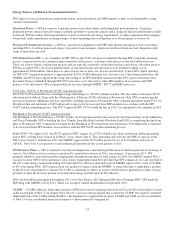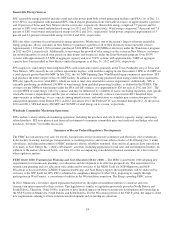Xcel Energy 2012 Annual Report Download - page 24
Download and view the complete annual report
Please find page 24 of the 2012 Xcel Energy annual report below. You can navigate through the pages in the report by either clicking on the pages listed below, or by using the keyword search tool below to find specific information within the annual report.14
Natural gas — The NSP System uses both firm and interruptible natural gas supply and standby oil in combustion turbines and
certain boilers. Natural gas supplies and associated transportation and storage services for power plants are procured under
contracts with various terms to provide an adequate supply of fuel. However, as natural gas primarily serves intermediate and
peak demand, remaining forecasted requirements are able to be procured through a liquid spot market. Generally, natural gas
supply contracts have pricing that is tied to various natural gas indices. Most transportation contract pricing is based on FERC
approved transportation tariff rates. These transportation rates are subject to revision based upon FERC approval of changes in the
timing or amount of allowable cost recovery by providers. Certain natural gas supply and transportation agreements include
obligations for the purchase and/or delivery of specified volumes of natural gas or to make payments in lieu of delivery. At Dec.
31, 2012 and 2011, the NSP System did not have any commitments related to gas supply contracts; however commitments related
to gas transportation and storage contracts were approximately $384 million and $462 million, respectively. Commitments related
to gas transportation and storage contracts expire in various years from 2013 to 2028.
The NSP System also has limited on-site fuel oil storage facilities and primarily relies on the spot market for incremental supplies.
Renewable Energy Sources
The NSP System’s renewable energy portfolio includes wind, hydroelectric, biomass and solar power from both owned
generating facilities and PPAs. As of Dec. 31, 2012, the NSP System was in compliance with mandated RPS, which require
generation from renewable resources of 18 percent and 8.89 percent of NSP-Minnesota and NSP-Wisconsin electric retail sales,
respectively. Renewable energy comprised 22.0 percent and 19.7 percent of the NSP System’s total owned and purchased energy
for 2012 and 2011, respectively. Wind energy comprised 11.9 percent and 9.4 percent of the total owned and purchased energy on
the NSP System for 2012 and 2011, respectively. Hydroelectric energy comprised 7.0 percent and 7.5 percent of the total owned
and purchased energy on the NSP System for 2012 and 2011, respectively. Biomass and solar power comprised approximately 3.1
percent and 2.8 percent of renewable energy for 2012 and 2011, respectively.
The NSP System also offers customer-focused renewable energy initiatives. Windsource®, one of the nation’s largest voluntary
renewable energy programs, allows customers in Minnesota, Wisconsin, and Michigan to purchase a portion or all of their
electricity from renewable sources. Approximately 24,000 and 23,000 customers purchased 184,000 MWh and 177,000 MWh of
electricity under the Windsource program in 2012 and 2011, respectively. Additionally, to encourage the growth of solar energy
on the system, customers are offered incentives to install solar panels on their homes and businesses under the Solar*Rewards®
program. Over 561 PV systems with approximately 6.7 MW of aggregate capacity and over 300 PV systems with approximately
3 MW of aggregate capacity have been installed in Minnesota under this program as of Dec. 31, 2012 and 2011, respectively.
Wind — The NSP System acquires the majority of its wind energy from PPAs with wind farm owners, primarily in Southwestern
Minnesota. The NSP System currently has more than 100 of these agreements in place, with facilities ranging in size from under
1 MW to more than 200 MW. In 2012, the NSP System began purchasing wind from three new projects, which provided
approximately 266 MW of capacity. The largest of these projects, the Prairie Rose Wind Project began commercial operations in
December 2012 and the NSP System will purchase the entire output from this 200 MW project. In addition to receiving purchased
wind energy under these agreements, the NSP System also typically receives wind RECs, which are used to meet state renewable
resource requirements. The average cost per MWh of wind energy under these contracts was approximately $41 and $39 for 2012
and 2011, respectively. The cost per MWh of wind energy varies by contract and may be influenced by a number of factors
including regulation, state specific renewable resource requirements, and the year of contract execution. Generally, contracts
executed in 2012 benefited from improvements in technology, excess capacity among manufacturers, and motivation to complete
new construction prior to the anticipated expiration of the Federal PTCs in 2012. In January 2013, the Federal PTC was extended
through 2013.
The NSP System also owns and operates two wind farms. The 101 MW Grand Meadow Wind Farm and the 201 MW Nobles
Wind Farm began generating electricity in 2008 and 2010, respectively. Collectively, the NSP System had over 1,870 MW and
over 1,600 MW of wind energy on its system at the end of 2012 and 2011, respectively.
Hydroelectric — The NSP System acquires its hydroelectric energy from both owned generation and PPAs. The NSP System
owns 20 hydroelectric plants throughout Wisconsin and Minnesota which provide 274 MW of capacity. For most of 2012, there
were nine PPAs in place which provided approximately 37 MW of hydroelectric capacity. Additionally, the NSP System
purchases approximately 850 MW of generation from Manitoba Hydro which is sourced primarily from its fleet of hydroelectric
facilities.
Wholesale Commodity Marketing Operations
NSP-Minnesota conducts various wholesale marketing operations, including the purchase and sale of electric capacity, energy and
energy-related products. See Item 7 for further discussion.


